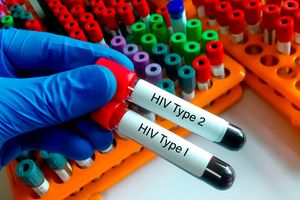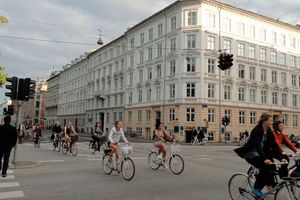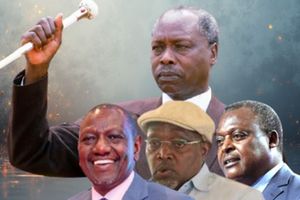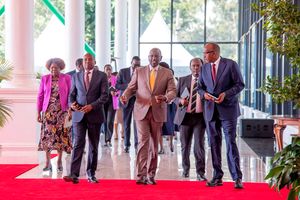
Private and public financial flows to developing countries will see a negative shift amidst feared escalation of the tariff wars.
Even with the 90-day pause on the imposition of some of the tariffs initially announced by the United States, the resultant uncertainty and turmoil is irreversible and the likely negative impact on global trade will compound the problems of some of the world’s poorest countries. Private and public financial flows to developing countries will see a negative shift amidst feared escalation of the tariff wars.
Next week’s annual spring meetings of the World Bank and IMF take place against the backdrop of these uncertainties and the dawning of a recessionary phase for the world economy. At 2.3 per cent in 2025, economic growth projections are lower than pre-Covid 19 pandemic levels according to United Nations (UN) sources.
The just released 2025 ‘trade and development foresights’ report by the lead UN institution on trade and development, UNCTAD outlines the risks facing the global economy. The report notes that the “Economic Policy Uncertainty Index is at its highest this century”. Volatility in US stock markets recorded a high only exceeded by earlier peaks registered during the 2008 financial crisis and the global pandemic in 2020.
Closer home in Africa, the report projects an average growth rate of 3.6 per cent for 2025, suggesting some resilience. But it is a mixed picture in a diverse continent. For two of the continent’s three largest economies of Egypt and Nigeria, the projected growth rate for 2025 is 3 and 3.5 per cent, respectively. This is on account of oil production (Nigeria) and dynamic manufacturing (Egypt). The forecast for South Africa is 1.4 per cent.
A 2024 International Labour Organization Brief notes that in 2023, 53 million youth in sub–Saharan Africa were neither employed, in school or undergoing training. Whilst agricultural productivity stays low, agriculture is still the main employer of youth.
European Union
Per the UNCTAD report, the European Union and North America’s projected growth rate for 2025 is one per cent. There is an elevated risk of recession in the North American region as Europe contends with subdued growth on account of high energy costs and heightened competition in its export sectors. Germany’s 0.2 percent makes it one of the world’s lowest growth spots this year. The imposition of tariffs would worsen the prospects for an already struggling manufacturing sector in the euro zone.
In the United States, the culprit is “financialization” of the economy which resulted in the relocation of manufacturing abroad, leaving the economy dependent on and in service of the financial sector (banking, private equity markets and other speculative sectors).
The projected growth rate for Asia is 5.6 per cent and at 6.5 per cent, India will see one of the highest growth rates this year. The 2025 projected growth rate for China is 4.4 percent.
The report confirms the pressure on development finance, as Overseas Development Assistance (ODA) declines with increased defence spending and other foreign policy shifts in major donor countries.
Estimates place the trend of shrinking ODA to developing countries at an 18 per cent drop between 2023 and 2025. The United Kingdom recently effected a 40 per cent reduction in its ODA as it increased its defence budget.
As the United States dithers over military spending in Ukraine, the European Union soared its own via the Rearm Europe Initiative. In 2024, increased defence spending by 15 countries exceeded growth in global investments in clean energy. For poorer nations, this also places progress towards the Sustainable Development Goals in jeopardy.
Hostile external conditions
Per the report, “many low-income countries face a perfect storm” as they contend with higher debt burdens, weakened economic growth and hostile external conditions around which they have limited control. The IMF’s latest debt sustainability analysis places 35 out of 68 low-income countries in debt distress or at the risk of it. The high cost of debt servicing will continue to take resources away from other aspects of critical spending.
Despite the fragmented state of play, the report also urges multilateral cooperation, redirecting from military spending to prioritise spending on infrastructure, social protection, and climate action. It calls upon global south countries to take decisive, supportive policy actions. Cautioning against “geo economic fragmentation,” the report recommends enhanced regional and international policy coordination.
In this gloomy scenario, the report calls for more South-South trade (especially with the rise of China), as a counter to the uncertainty in global trade. Presently this sort of trade accounts for one third of global trade, its growth especially driven by rapidly expanding intra-regional trade in South-East Asia. In contrast, despite the Africa Continental Free Trade Area, intra African trade is still depressingly low, due to factors including poor infrastructure and hindrances to movement of people and goods within the continent.
As the world’s biggest powers compete for economic (and political) hegemony, a helpful reality check for Africa and its leadership should be to focus on trade within before training eyes externally.
Atieno Ndomo is a Social Policy Analyst with a keen interest in Political economy.













